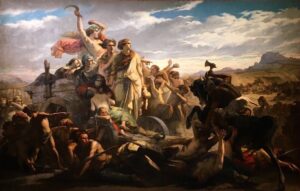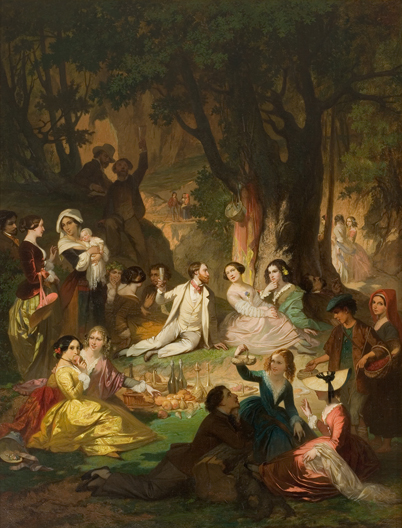It’s unclear why Glaize selected a goûter champêtre or picnic for a portrait of his patron Alfred Bruyas. Perhaps Glaize meant to highlight Bruyas, dressed white, in a theatrical social setting as a man among many women. He spotlights his patron in the center, toasting, but not touching, the woman, also in white, seated next to him. Other women surrounding Bruyas are preparing food and wine on the picnic cloth at the very center of the picture. The woman beside Bruyas offers him a toast, but they do not interact physically. Around Bruyas, other men are also being attended to, and there is a whiff of courtship but no touching. The men are respectful; the women seem intent on serving and looking pretty. Judging from the women’s docility, Glaize suggests that for Bruyas, women are meant for nurturing and serving.
Glaize positions himself as an observer: the man in the tall tan hat in the shade of the tree in the far-left background. He holds a pencil to draw the scene.
For Glaize, this is an uncommonly chaste picnic. He was a man who liked his paintings crowded with naked women, as in his Misery of a Procuress (1861), River God Recusing a Naiad (1880), Cask of Venus (1845), or Les Femmes Gauloises (1893).
Bruyas was also Bustave Courbet’s patron.

Featured Image: Auguste Barthélemy Glaize. Souvenir des Pryrénées ou Le goûter champêtre
See Auguste Barthélemy Glaize. Souvenir of the Pyrenees Souvenir des Pryrénées ou Le goûter champêtre (1851), oil on canvas. Musée Fabre, Montpellier

